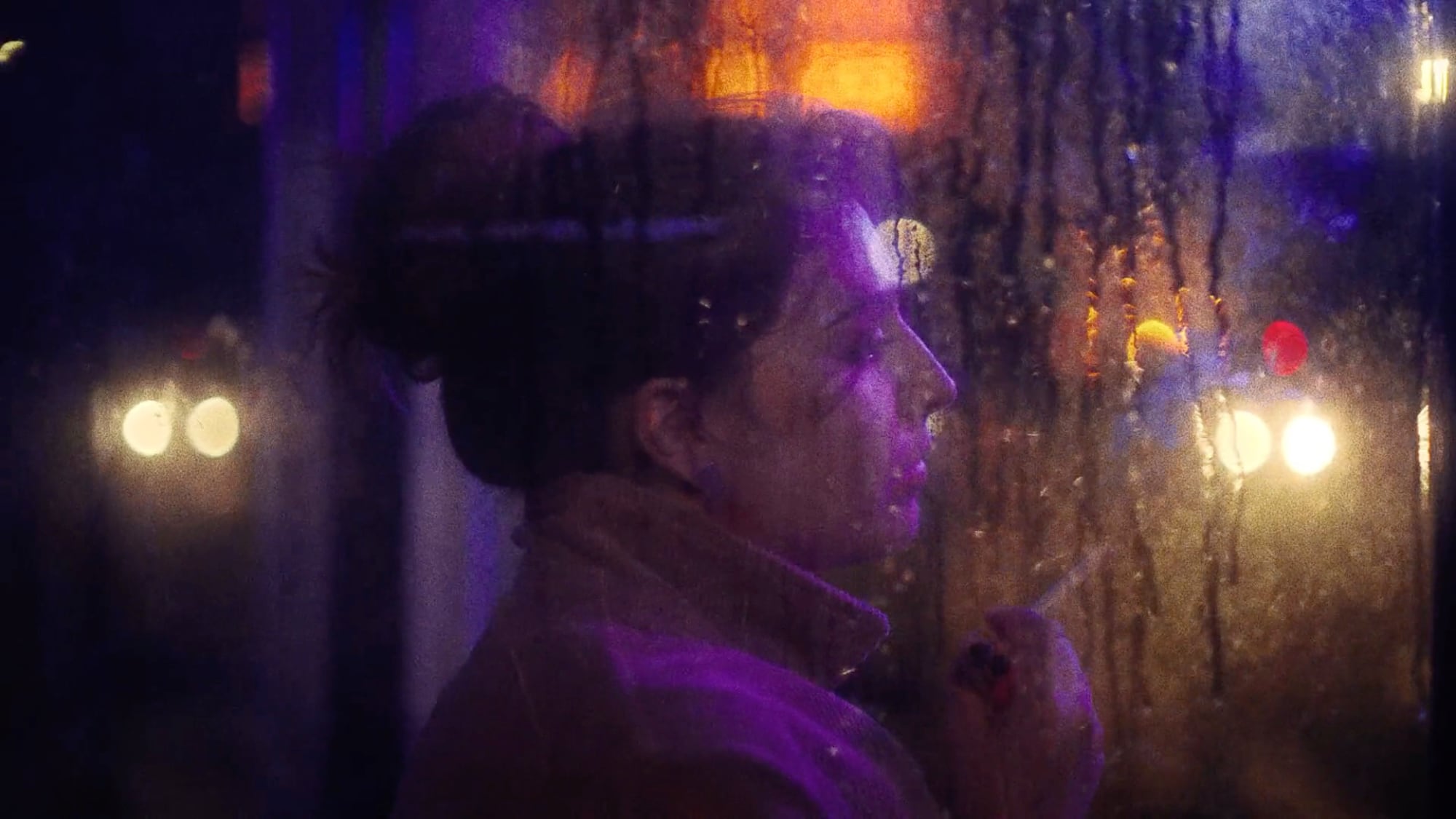
A decade of friendship, years of shared experiences and a deep and sensitive understanding of her friend’s mental health diagnosis led filmmaker Melanie Cura Daball to the making of her hybrid animated documentary short Trust Me. Co-writer and protagonist Anne Chataigné’s revealing and terrifying battle with bipolar and her tumultuous journey navigating life, her family and recovery is astutely approached through a mix of animation, narration and cinematic recreations of life events. Trust Me provides a balanced and compassionate look at the incredible struggles of mental health, not only for the sufferer but also for the people around them and the film’s mixed media approach allows it to cover large swathes of time and more difficult scenes with creativity. A positive and inspiring story, told with respect and love for all involved, and a film we’re proud to premiere here on Directors Notes today, we speak to Melanie and Anne about fostering their respectful, collaborative partnership through all aspects of the filmmaking process, translating an internal world onto the screen for audiences and the narrative opportunities that were opened up by introducing animated scenes to the film.
How did this deeply personal story come to be a film?
Melanie Cura Daball: Anne and I met at university and have shared a close friendship for over a decade through Anne’s mental health journey. I’ve always been inspired by her unique ability to articulate her experiences, her approach to life and mental health and the bravery of confronting her own internalised stigmas along the way. The idea of her sharing her story was initially a fleeting thought when reflecting on our university days and how many of Anne’s friendships were affected by her diagnosis. All of us were out of our depths back then, having little to no understanding of what bipolar is and how a life with bipolar feels and looks like. My thought back then was that a film like Trust Me would have been incredibly helpful and could have significantly expedited our understanding of Anne’s symptoms, leading to a quicker diagnosis and would have shaped how many of them would have approached the aftermath of the diagnosis. We decided from the very beginning that Anne would be involved in every stage from pitching for funding with the BFI Doc Society to co-writing, participating in the casting process, being on set, and in the editing room. We also agreed that Anne could always change her mind about sharing her story or how identifiable she would be, even up to the project’s conclusion – which, incredibly, Doc Society was fully on board with as well.
What approach did you take with regard to the manner in which you were telling this story to ensure Anne was comfortable with everything?
MCD: The creative approach to the film was very much rooted in a wish to champion more ethical storytelling – especially in the documentary world. Prior to my transition into the film industry, I worked as a TV journalist, most recently as an East Africa Correspondent and Bureau Chief for DW in Nairobi. And while I want to firmly believe journalists also prioritise ethical storytelling, unfortunately, even with the best intentions at heart, the reality of the circumstances stories are told in can often conflict with those intentions: the fast-paced news environment means extremely limited time available with story protagonists; protagonists have little to no agency and decision-making power as to how involved they are in the narrative process and how they are presented on screen etc. So when considering an independent short documentary, I envisioned a collaborative, empowering and respectful approach, offering a safe space for someone close to me.
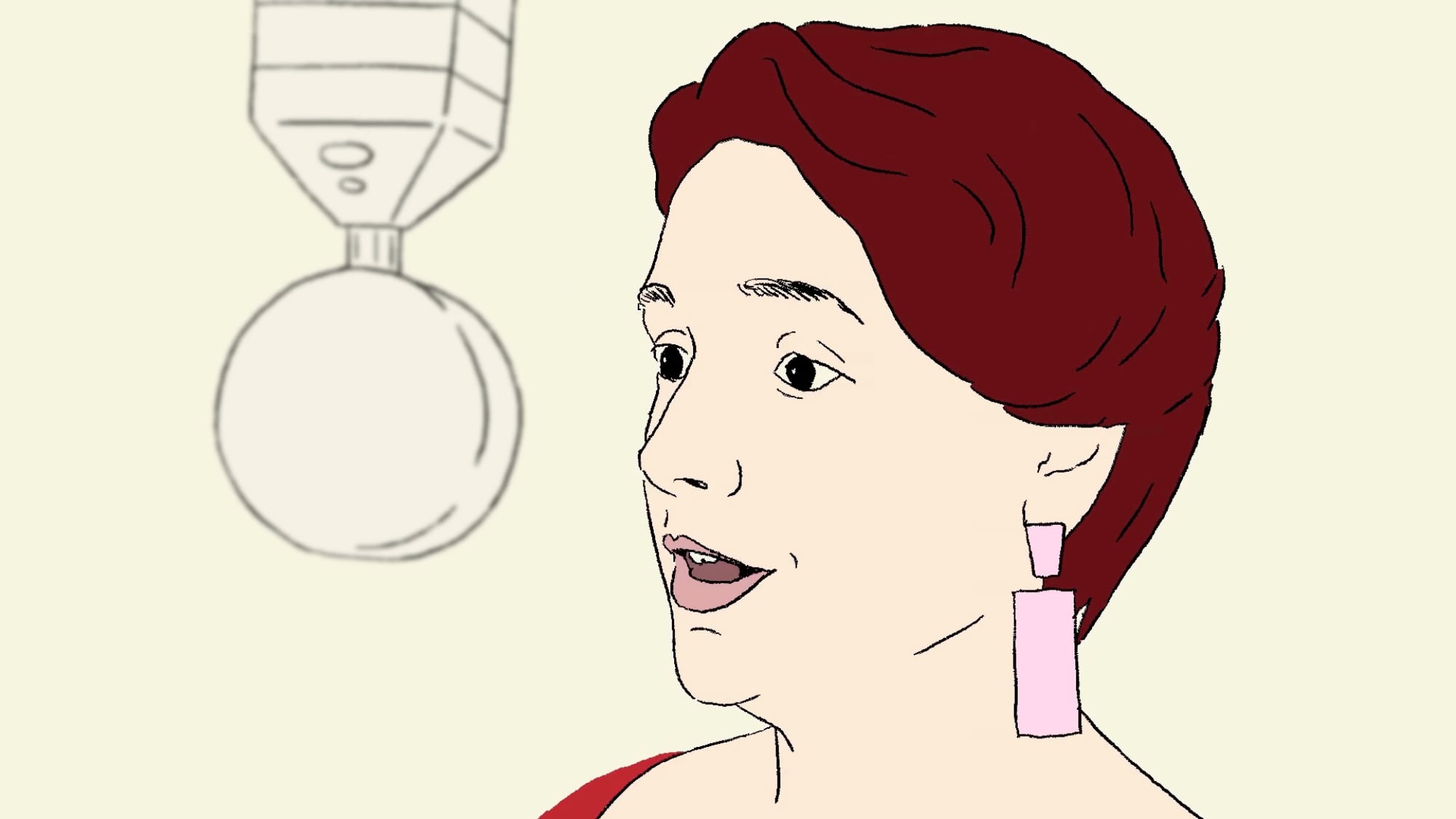
Anne was initially uncertain about revealing her face on camera. Creatively, this was coupled with Anne’s wish for the film to convey what it feels like to live with bipolar, and my own wish not to make a grey, flat and sad-looking film on mental health. Ultimately, these initial directions formed the basis for our creative decision to use animation, live-action recreations and a narrative voice-over by Anne. It felt like the right approach to respect Anne’s initial privacy wish and effectively convey the emotional depth of living with bipolar disorder. Our conversations and pre-interviews helped us select specific episodes from Anne’s life for detailed exploration in the master interview. In collaboration with our producers and animator, we then decided which parts of the story would be animated and which would be portrayed in live-action. The live-action scenes realistically depict Anne’s younger self and her intense experiences, while the animation, including a rotoscope of the interview for Anne’s comfort, allowed for a more emotive and poetic expression over extended periods and helped us cover longer spans of time.
Can you expand on your ethical storytelling method and how you specifically stuck true to this
MCD: In the whirlwind of filmmaking, it’s alarmingly easy to lose sight of the individual at the heart of the story who has offered us the privilege of their truth. This industry, with its penchant for dramatic flair, often forgets the weight of that gift, leaving little room for these voices to shape their own stories. They’re frequently sidelined, their experiences packaged and presented without their input or consent, which can have profound implications. Imagine sharing a piece of your soul, only to see it distorted on screen, affecting how you’re perceived by your loved ones, your colleagues, and indeed, the world. It’s a reality that many face, often without fully grasping the potential fallout.
Anne was present on set when we filmed the live-action scenes, which was hugely beneficial for our actors, especially Nicole Schretlen Montes who played Anne.
Recognizing this, we’ve endeavoured to approach our project with a commitment to honour the trust and the story shared with us. It was clear from the onset that Anne, whose story we are telling, wouldn’t be just a subject, but a partner. This meant she had the autonomy to change her mind at any stage, to be involved as a co-writer, and to have a say in everything from casting to the final edit. And yes, this approach required a leap of faith but it created a foundation of mutual respect and understanding that only enriched the process. Anne was present on set when we filmed the live-action scenes, which was hugely beneficial for our actors, especially Nicole Schretlen Montes who played Anne. In addition to my direction, they had the opportunity to ask Anne specifically how she felt back then, how she perceived the way everyone acted around her etc. Anne would often say, “It’s my story, but it’s your film, and I trust you.” This, in essence, encapsulated our entire ethos. It’s about balancing the integrity of the story with the creative vision, ensuring to give agency back to those whose stories we tell to make the person at the heart of it all feel seen, heard, and respected.

Anne, I think your involvement from the start is so important to the story’s authenticity. How did your feelings change from your initial hesitancy throughout the process?
Anne Chataigné: When Melanie told me about her idea to make a film about my story, I gently laughed and said I would be glad if she wrote my eulogy. We continued the conversation and what became so appealing was my ability to reclaim my story, with my friend. Throughout the creative process, it became apparent that the story wasn’t just mine or Melanie’s, the film made it shift from the intimate to the universal. Having a sense of agency based on a capacity to pull away from the project at any point was also crucial to building trust and a safety net. This was fostered by Melanie and is ethically very important and unfortunately still rare in documentary filmmaking.
Having a sense of agency based on a capacity to pull away from the project at any point was also crucial to building trust and a safety net.
What was the most challenging part of exploring your life and seeing yourself on screen?
AC: Remembering what happened was challenging and that is why it was important to speak to other people who were there to inform the script. Before we wrote the script, we held in-depth interviews with specific friends and family who were there at the time. Putting the pieces of the puzzle together from different perspectives is important because in order to cope with the shame and stigma, I had forgotten.
Anticipating the audience’s reaction and tackling my shame and self-stigma were the main concerns. Seeing myself on screen didn’t end up being a big deal because at that point my story had become a thing of its own, crafted by the creative power of all the brilliant cast and crew who made the film. Also, in the edit, you end up watching and listening to yourself so many times that you get used to it. Any scenes we thought would be difficult to talk about, we used the poetic power of animation to convey it. I’m still on a journey of acceptance in some aspects. There are three psychological steps to overcome the shame and stigma: awareness, insight, and behaviour. The film helps with the first two, but the third one is ongoing.

Can you tell us about putting together that vibrant scene with Anne in the club?
MCD: Anne was adamant from the beginning that her story shouldn’t be another “a day-in-the-life of” portrayal of living with bipolar disorder, she yearned for something far more visceral, for viewers to feel, to truly taste what it feels like to live with it. So, the creative vision was always driven by the endeavour to translate Anne’s internal world into a cinematic experience that resonated with authenticity and emotional depth.
The scene in the Berlin nightclub, the culmination of an intercut sequence, was our canvas for this translation. Here, the very fabric of Anne’s reality begins to warp – her world accelerates, her energy levels surge, and her thoughts race. It’s a vivid depiction of mania, the speed of Anne’s narration mirrors the quickening pace of her thoughts and speech – both common symptoms when experiencing a manic episode. Natalja Safronova, our Director of Photography, played a pivotal role in bringing this vision to life. Her mastery of colour painted each frame with an intensity and saturation that mirrored the heightened state of Anne’s perception. In this scene, we didn’t want colour to be just a visual element but an emotional cue. So the decision to envelop Anne in an alarming shade of red was both a stylistic and narrative choice. Dipping Anne in red light served as a harbinger of the turmoil and potential danger Anne would experience in her state(s) of mania. It also serves as a poignant piece of foreshadowing, a visual echo of the moment Anne receives her diagnosis later in the film.
The creative vision was always driven by the endeavour to translate Anne’s internal world into a cinematic experience that resonated with authenticity and emotional depth.
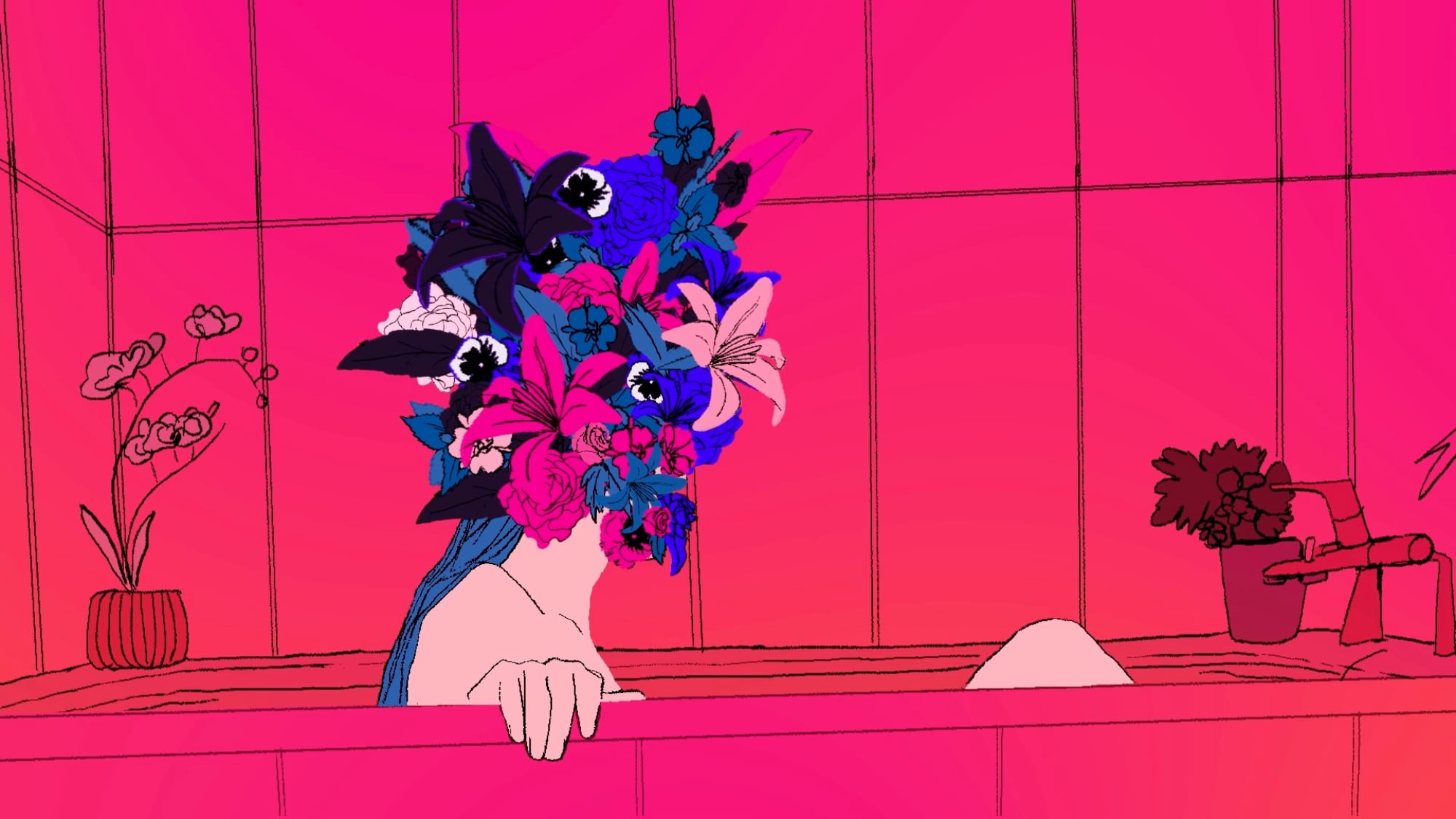
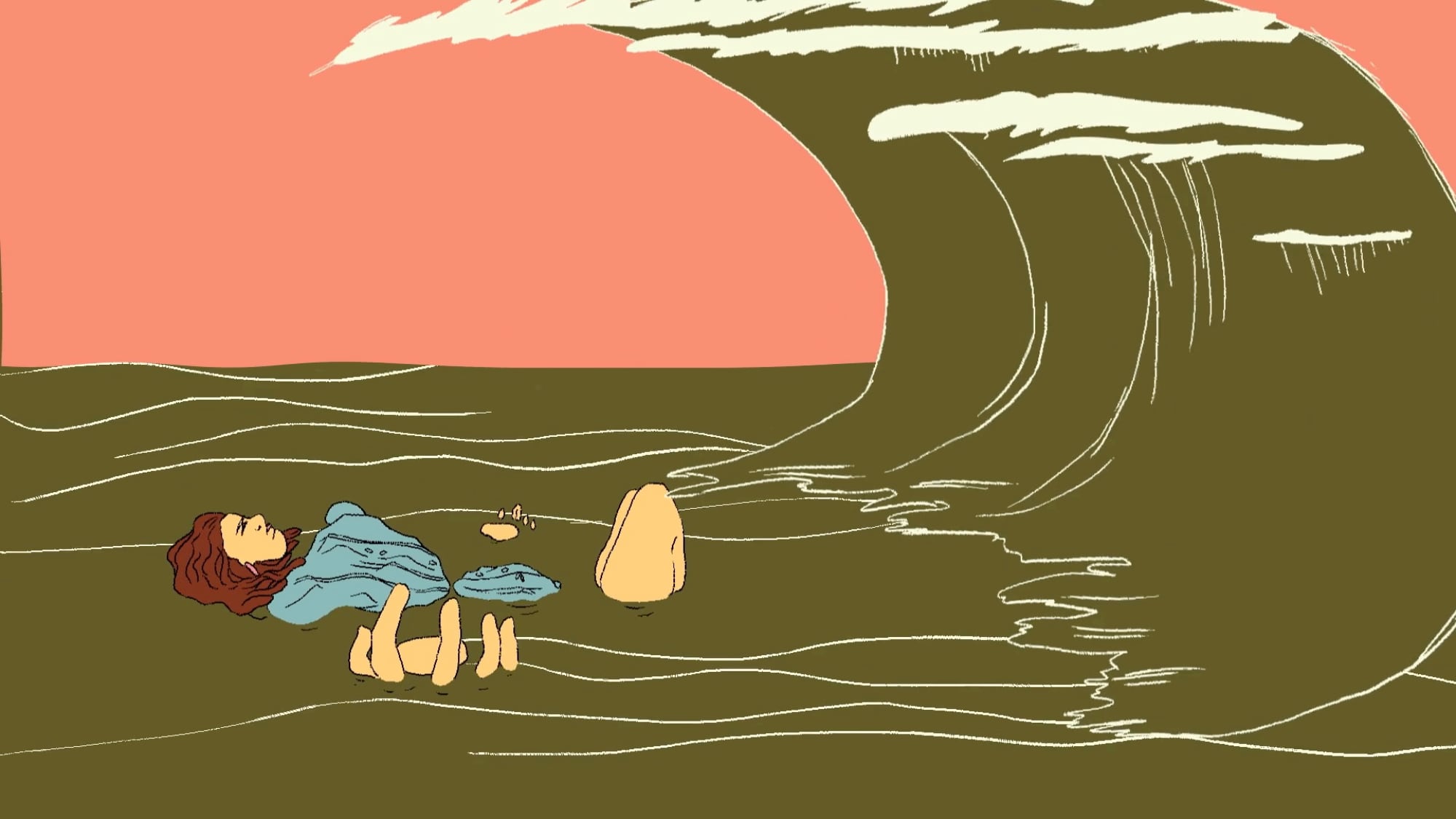
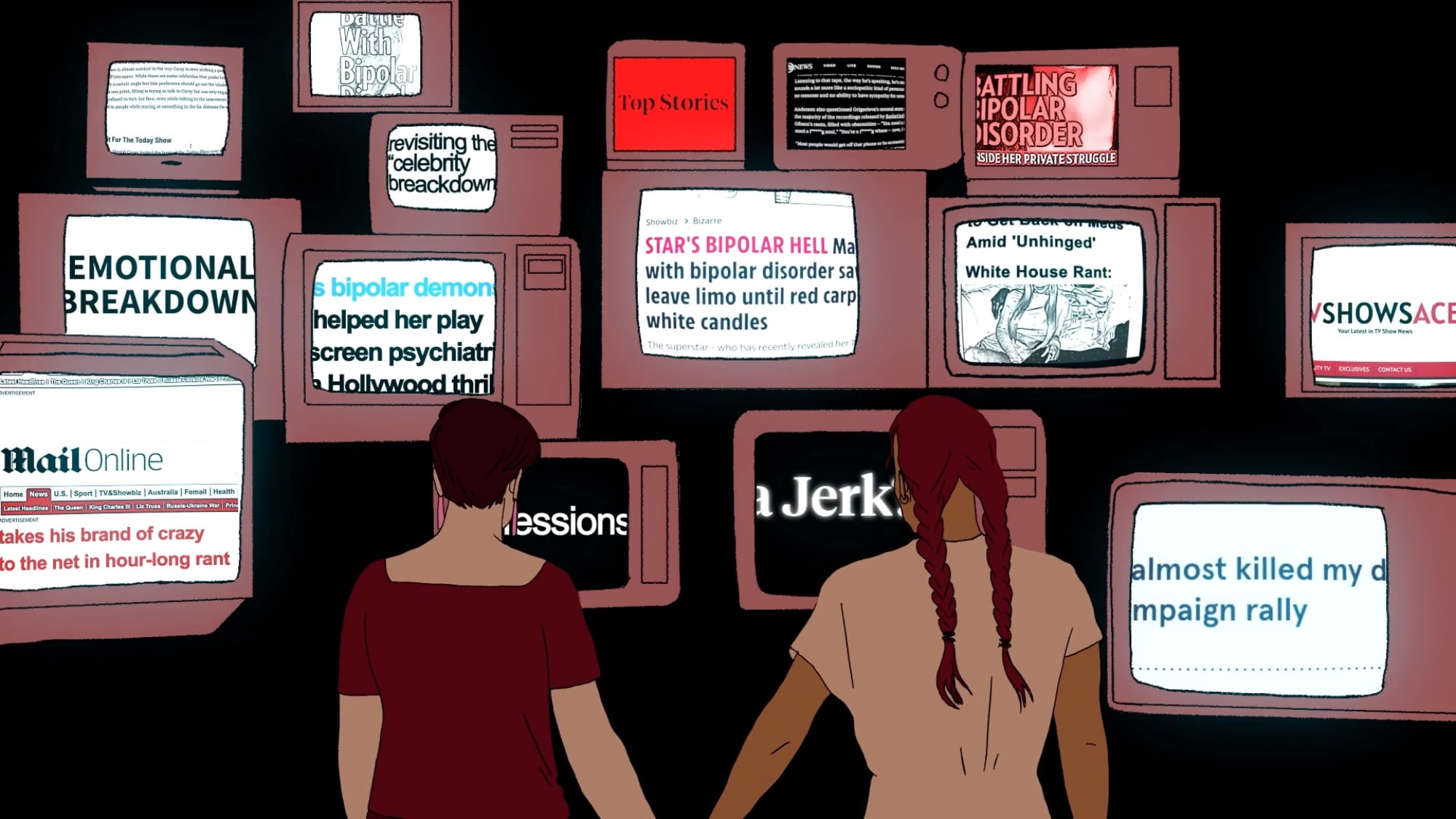
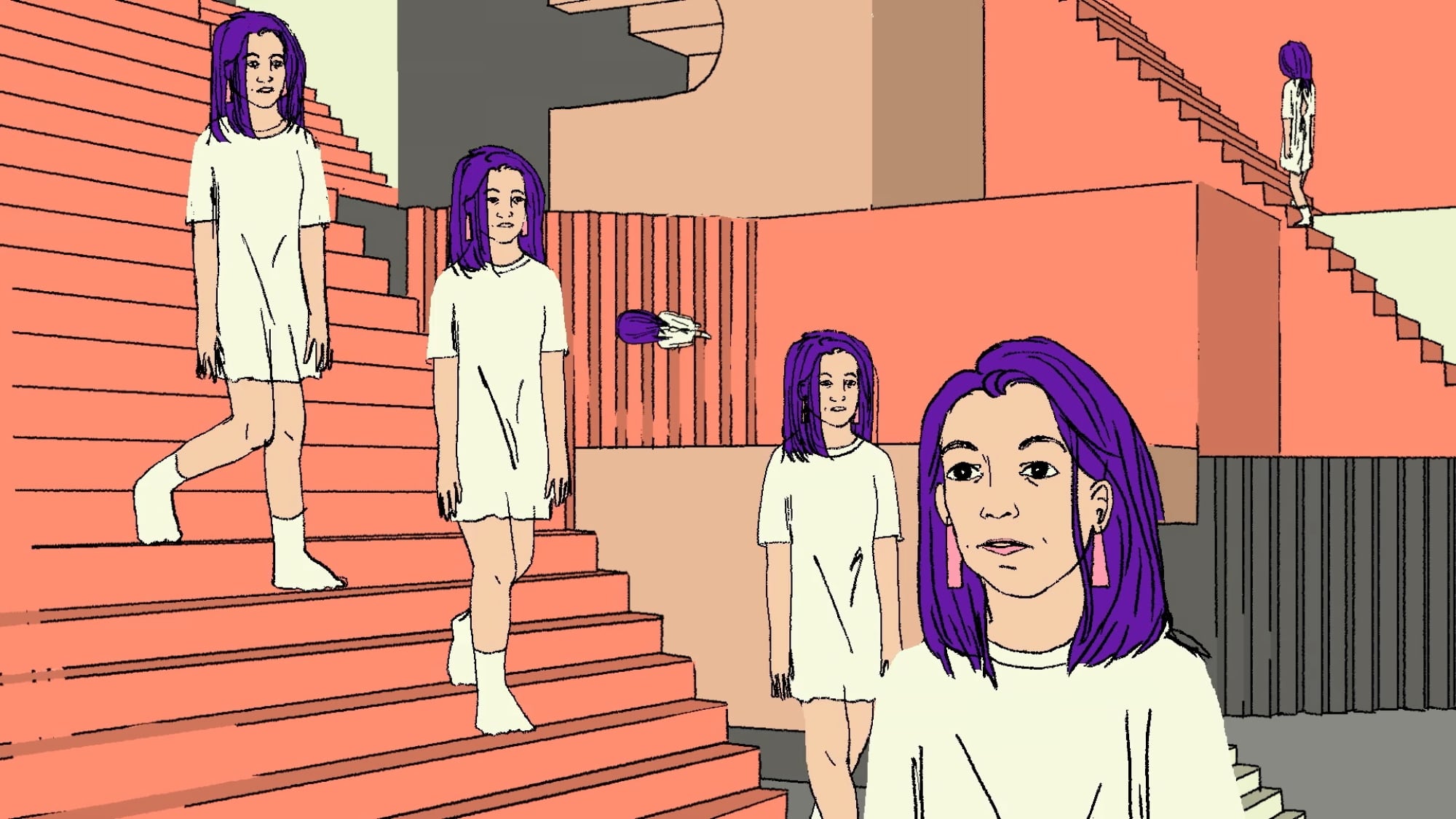
How did the use of animation benefit your storytelling?
MCD: The decision to use animation in this short documentary was initially born out of the need to find a story-telling device and visual medium that serves both the story, as well as the needs of our protagonist, Anne. The truth is, Anne was on the fence about being on camera – a sentiment many documentary subjects share and, and one that I encountered numerous times during my time as a TV correspondent. The industry’s usual band-aids – pixelation or clever angles – felt like they would dehumanise Anne, which would only feed into the stigma surrounding mental health issues. And pushing someone to show their face didn’t sit right with me.
So, animation emerged as this beautifully innovative solution. It felt respectful and sensitive, and Anne was all for it. We captured the essence of her story in the edit of the master interview, before Liza Cruz and her team took on the Herculean task of rotoscoping, tracing over the live-action footage to create animated sequences. The choice to animate Anne’s interviews started as a workaround and became the gateway to creativity. It allowed us to convey emotional states and narratives in a way live action simply couldn’t – more poetically, more profoundly. Plus, it gave us the flexibility to span longer episodes of time, crucial for a short film aiming to capture the complexity of Anne’s experience beyond just a diagnosis.
And here’s the beautiful part: as you’ve seen, Anne chooses to reveal her face by the film’s end. This wasn’t something we could have predicted; it was a testament to her journey through the film, confronting and overcoming her internalised stigma. It was her statement of pride in her story, a decision that resonated with profound authenticity.
The choice to animate Anne’s interviews started as a workaround, and became the gateway to creativity.
Why did you want to include bites of your voice in the film?
MCD: Initially, the thought of inserting myself into the narrative was far from my mind. My relationship with Anne predates the film by years; we’ve navigated the waters of her mental health journey together. And yes, as the film unveils, there was a moment – a rather memorable one for me – where I played a role in a decision that led to Anne being hospitalised. A moment fraught with complexity and, undoubtedly, trauma.
When we sat down for our master interview, something clicked when our producers Chloe Abrahams and JIJO witnessed our conversation: so intertwined with memories, laughter, and tears, and encouraged us to lean into that. It became clear that a big part of Anne’s story is very deeply rooted in the messy, beautiful entanglement of friendship, love, and the kind of trust that can only be forged through shared adversity with our loved ones. So Trust Me in its essence, became a love letter to those connections, a testament to the power of friendship and the resilience of the human spirit in the face of mental health struggles.

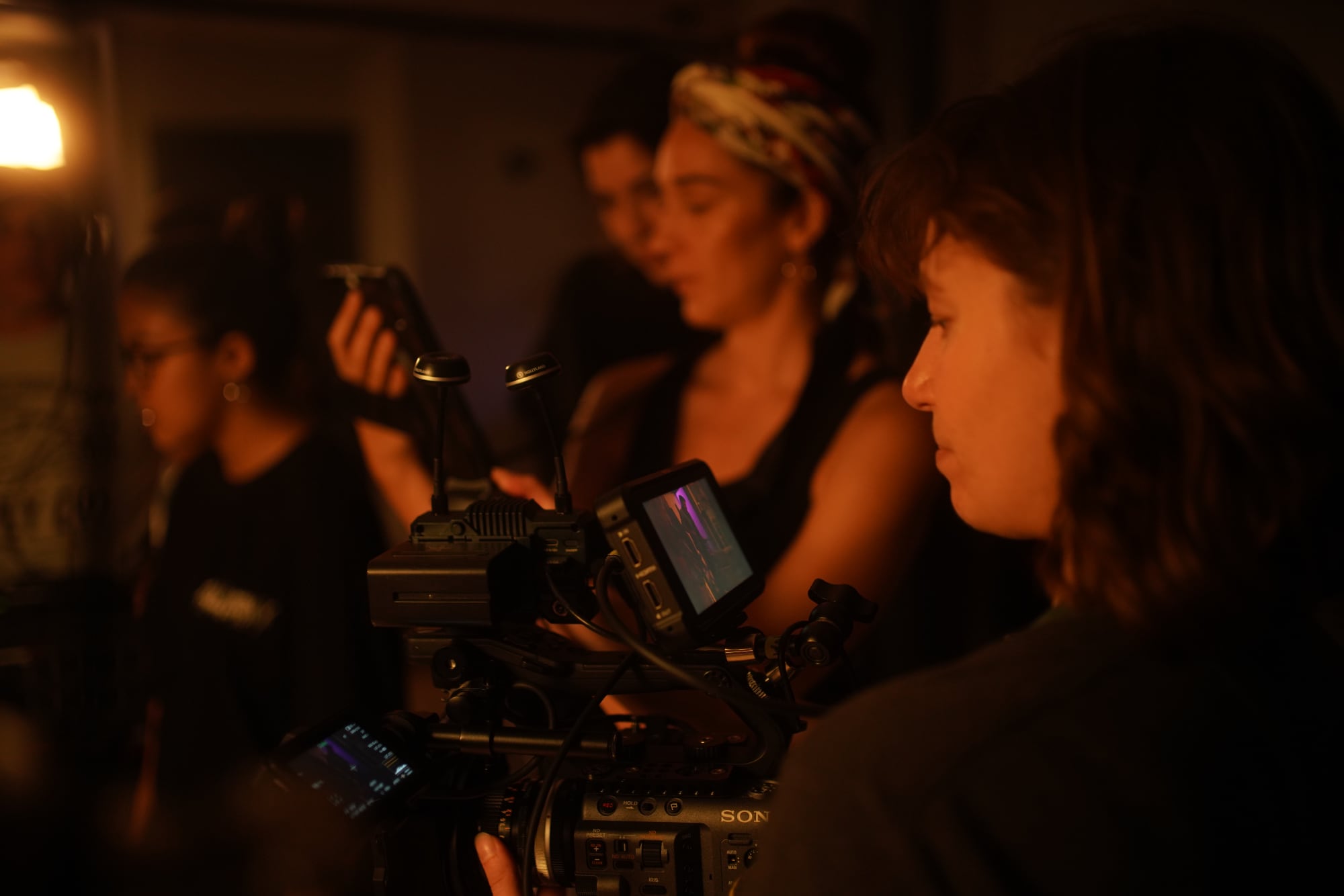
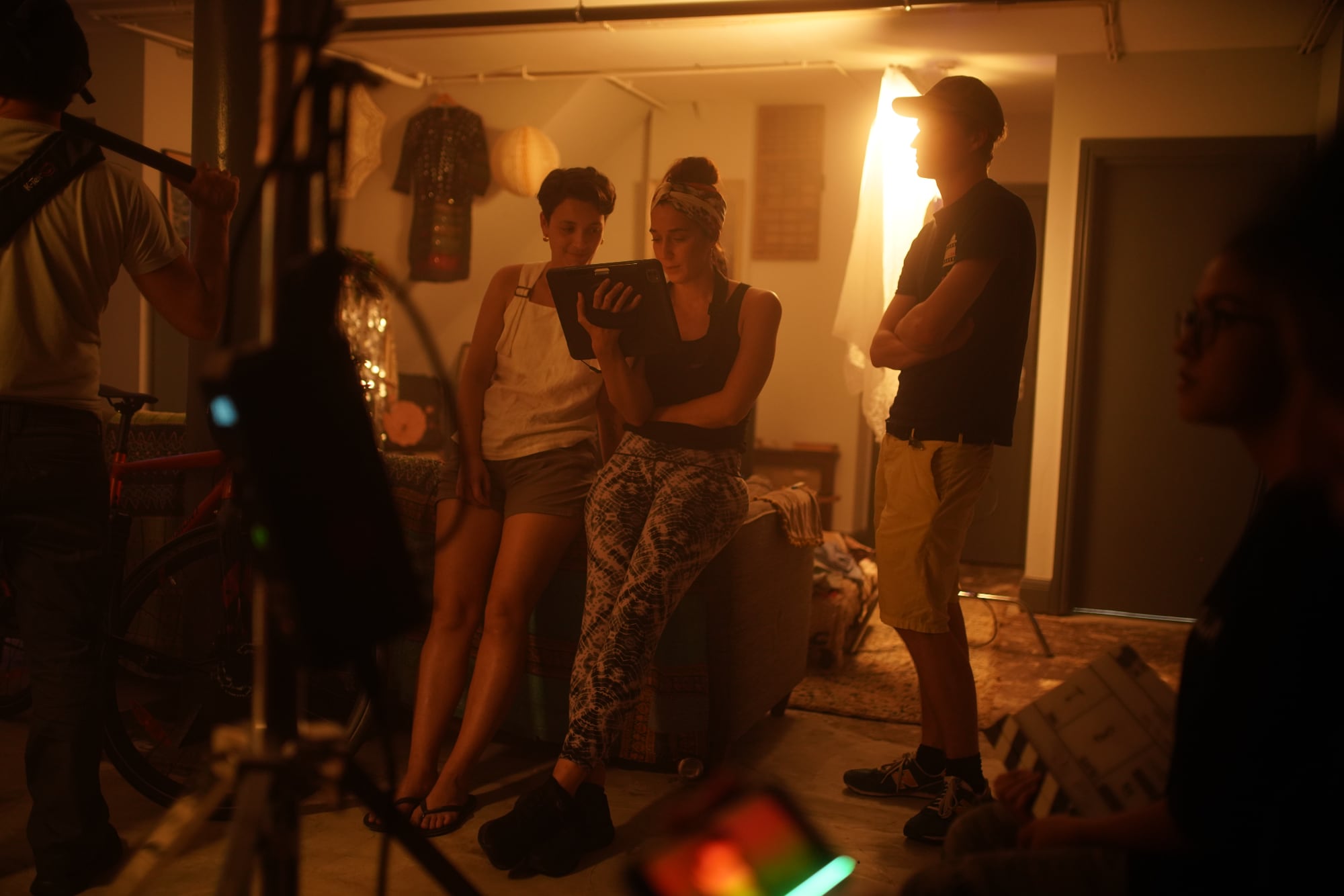
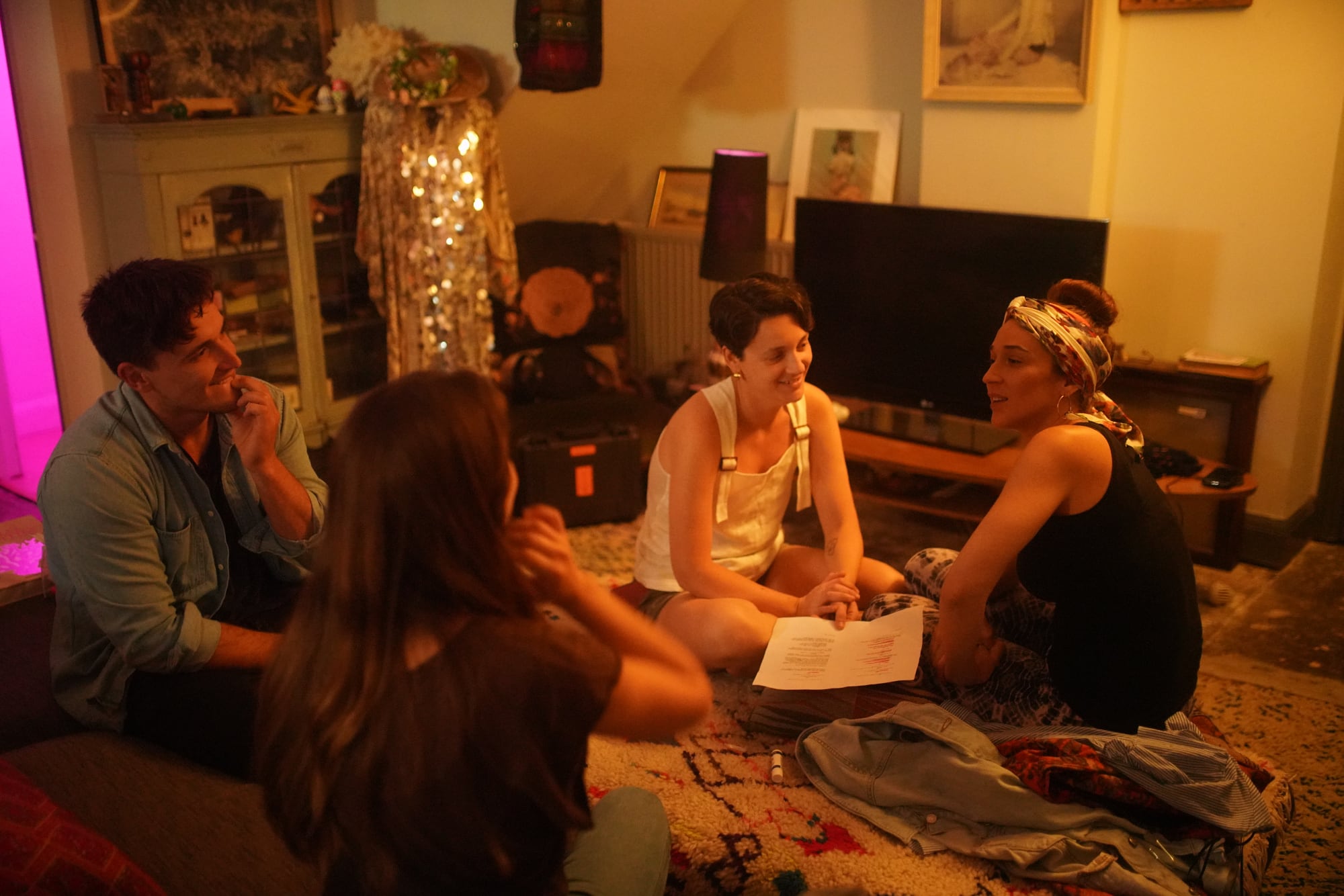
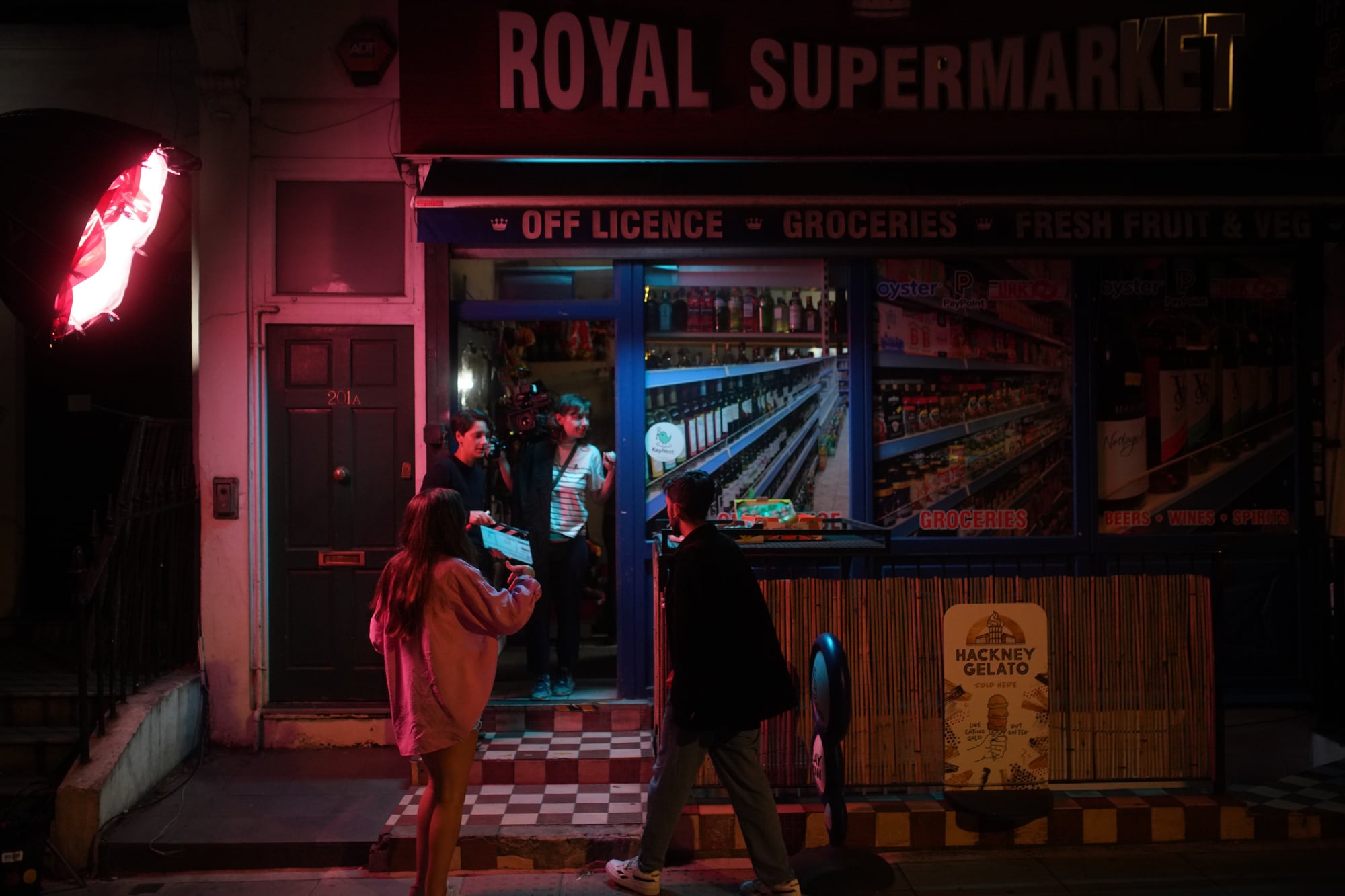
The edit cannot have been easy given the need to ensure the right balance of the hybrid elements.
MCD: Navigating the intricate dance between live action, animation, and narration in this film was a labour of love and a bit of a predestined harmony that we had to trust in from the very start. After finishing the audio edit of the master interview, we whisked over our animator Liza Cruz from Paris and, in a team effort, mapped out the moments of reflection, when symbolic and tender animation would better complement Anne’s story, and choose the significant moments and memories that live action would be more suited to breath life into.
It became clear that a big part of Anne’s story is very deeply rooted in the messy, beautiful entanglement of friendship, love, and the kind of trust that can only be forged through shared adversity with our loved ones.
With animation being such a painstakingly laborious endeavour, every second takes hours, the blueprint of our narrative balance had to be drafted long before the actual edit or even started shooting. Months were dedicated to animation alone, so we had the time to storyboard every animated second in detail. By the time we approached the final edit, the task was more about finessing the live action sequences and weaving them into the tapestry of animation and narration to ensure an emotive flow which could only come from a place of deep, collaborative intuition.

What is next in your filmmaking exploration?
MCD: Trust Me was such a great opportunity to hone my directing skills, tying together my past in documentary and news with a more creative and personal vision. The possibilities it opened up for storytelling really excite me and this year I’m planning to delve deeper into writing and directing fiction – with an eye towards transitioning into long-form.
During the lockdown, I set up my own production company called Keep Rolling Studios, so the daily hustle still involves pitching, directing and sometimes producing short-form content, music videos and docs. It’s been such a hard time for so many in the industry this Spring, so I’m keeping a few doors open for safety; but equally, it feels like the right time for me to breathe more life into the story ideas and visuals that have been bouncing around in my head for a while now. They’re crystallising and thankfully feel like the right mix of exciting and important. I’m currently writing my first TV pilot for an original drama, and am hoping to spend as much time on HETV sets this year as possible.
Overall – I’ve found myself drawn to narratives that diverge from a classic hero’s journey, focusing on exploring more complex elements of humanity, with the richness of ambiguous characters and emotions, and non-linear structures. I’m also keen to contribute to the shift away from the portrayal of women as mere sidekicks, props, or tools to serve a man’s story. Above all, I don’t want to underestimate an audience’s intellect – which I find quite patronising – but rather craft ambitious stories that entertain and also provoke introspection, that say something fresh and also inspire dreams!



A vulnerable, hard-hitting, and deeply moving exploration of what could have stayed a dark chapter in someone’s life, and is instead portrayed as the seed for immense personal growth and self-awareness. Crucially, it’s this growth that transfers beyond the screen, acting as a truly informative film on what it means to be bipolar, or know someone with bipolar.
As someone who was entirely out of their depth when it came to processing other’s bipolar in real-time, this film allowed me to reconcile my own actions with what Anne was going through, and to admit to my own shortcomings as a friend, viewer, and ultimately, person. I am grateful to both Anne and Melanie for their vulnerability throughout.
I remain in awe of the authenticity and creativity in which Anne’s story has been depicted, and the testament to friendship that underscores the entire production.
We are so pleased the film has resonated with viewers. It is a unique and beautifully put together piece with everything around the struggles of mental health and bi-polar dealt with authentically and honestly which is no small feat for a filmmaker.